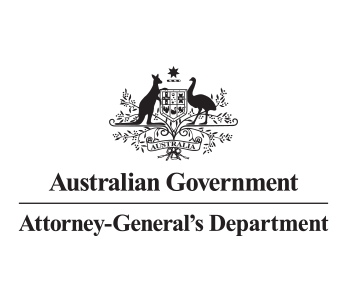Use data to counter fraud
Use data to counter fraud
Data is becoming increasingly important in the fight against fraud. In the modern world, data is a huge asset that underpins the vast majority of our interactions.
Data can be used for a variety of purposes, such as helping governments deliver more effective and efficient services to its citizens. It can also help governments protect taxpayers' money from fraud and safeguard the essential services Australians rely on.
Australian Government entities can use data in a number of ways to improve the integrity of public services, including:
- streamlining application processes and indicating where information provided may not be accurate
- for assurance or compliance activities, such as by reviewing anomalies in the application, or post application behaviour
- sharing it with other entities to find fraud across government programs or improve intelligence and suitability assessments.
Data analytics
The Centre's Fraud Data Analytics Leading Practice Guide provides a framework and principles for implementing leading practice fraud data analytics. This includes:
- how to embed fraud analytics into organisational processes
- how to build a Fraud Operating Model that makes effective use of fraud data analytics
- how data analytics can enable a Fraud Operating Model
- how to implement a Fraud Data Analytics Capability.
Fraud Data Analytics enables more than just better fraud detection and allows for:
- the detection of fraud indicators
- population risk assessment and analysis
- the definition of new fraud indicators
- management information and decision support.
To complement the Fraud Data Analytics Leading Practice Guide, the Centre has developed a Fraud Data Analytics Catalogue of Techniques. The catalogue provides direction on the types of analytics techniques that are useful to explore and examples of when and how to deploy them.
This catalogue is a working document we will continue to develop over time with input from fraud analytics teams here in Australia and overseas.
Data Sharing
It is critical that we look to share data across the Australian Government and with other sectors, as criminals, scammers and fraudsters look to exploit and take advantage of vulnerable Australians across multiple programs. By exploring and taking full advantage of opportunities to share and match data, entities will be able to better find and combat these fraudsters.
Strengthening data sharing capabilities
The Centre's Sharing Data, Information and Intelligence Toolkit provides practical guidance and strategies to help counter-fraud professionals overcome barriers to data sharing. The evaluation and strengthening of data sharing efforts involves 3 steps:
- Understand the data. This includes identifying:
- the type of data being collected
- the relevant legislations concerning such data
- the methodology of data collection
- the context of such data collection within the fraud operating model.
- Identify the barriers to data sharing that need to be overcome. These are related to the factors that influence data sharing:
- Purpose - the reason to share information
- Legal - legal and administrative requirements that govern and underpin the information sharing process
- Familiarity - the level of knowledge and awareness regarding information sharing processes
- Risk Appetite - the amount and type of risk an entity is willing to pursue
- Trust - perceived ability to handle and use that information
- Relationships - connection with other entities.
- Leadership - encouragement by senior executives to support information sharing
- Capability - the expertise required to set up and conduct information sharing
- Resources - staffing and cost requirements
- Systems - ability for systems to exchange and make use of information
- Reliability - awareness and confidence in the applicability and accuracy of data.
- Develop and employ strategies, including but not limited to:
- identifying expected benefits from sharing the data
- using consistent, whole-of-government platforms and processes
- de-identifying data
- using legislation that enables data sharing
- articulating responsibilities and identifying potential data share partners
- articulating risks and applying a risk-management framework
- defining the objectives and scope
- starting with pilots
- making technology considerations.
Why pilot arrangements are helpful
A data pilot is a way of designing and implementing a new data sharing arrangement to test whether it helps detect, disrupt or prevent fraud. This can help prove the concept with fewer resources and avoid common mistakes that can contribute to the failure of new projects.
The key aims of a data pilot are to test the quality, performance, reliability and value of the arrangement before increasing its scale or establishing repeatable or automatic data sharing.
How to run a data pilot
Our Data Sharing Pilots Leading Practice Guide describes a 5-phase process to running a data sharing pilot to counter fraud:
- Phase 1: clearly define the fraud problem you want to solve.
- Phase 2: meet with potential partners to explore ideas and develop the concept, objectives and scope of the pilot.
- Phase 3: develop a plan, legal frameworks and assessments, and define the data to be shared and the method of exchange.
- Phase 4: exchange the data, analyse the data and test the results.
- Phase 5: evaluate the results of the pilot and build on what you have learnt.
This guide reflects leading practice approaches and principles that have been developed and tested through multiple data pilots delivered in the UK and Australia.

